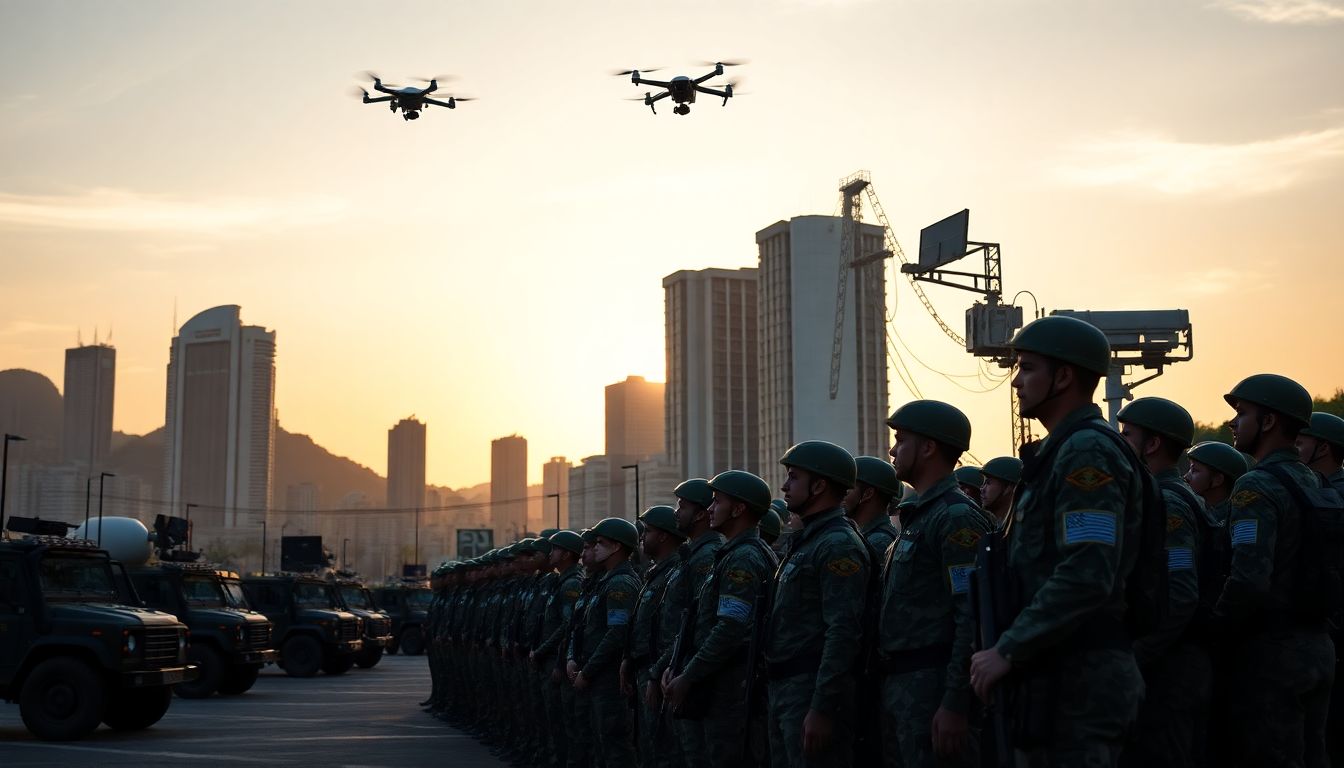Table of Contents
As Brazil gears up for the upcoming Brics summit in Rio de Janeiro, there’s a palpable sense of anticipation—and a serious commitment to security. With about 20,000 military personnel on standby, the nation is pulling out all the stops to ensure the safety of leaders from 28 countries and various international organizations. This isn’t just a routine event; it’s one of the largest peacetime security operations Brazil has seen in recent history. Why such a hefty deployment? Because the stakes are high, and international cooperation among emerging economies is more crucial than ever.
Military Presence and Safety Protocols
The Brazilian government has laid out an extensive security blueprint that includes not only a strong ground presence but also advanced air defense measures. Given that leaders from major emerging economies will be congregating in this vibrant coastal city, the security efforts are reaching unprecedented levels. The Museum of Modern Art in Rio, the primary venue for the summit, will be under tight surveillance, and armed fighter jets will patrol the skies. You might wonder: what happens if something goes awry? Well, in extreme scenarios, the Brazilian air force has the authority to intercept and potentially shoot down any aircraft that don’t follow the rules. This precaution underscores how seriously Brazil is taking this international gathering. It’s a level of military readiness we haven’t seen during other major events in the country, like the World Cup or the G20 summit.
Airspace Control and Airport Operations
To keep everything secure during the summit, Santos Dumont Airport, which mainly handles domestic flights and is conveniently close to the venue, will be temporarily closed. This decision aims to minimize any potential security risks from air traffic in the area. Can you imagine the chaos if things went sideways? To prevent that, all domestic flights will be rerouted to Galeão International Airport, Rio de Janeiro’s main international terminal. Only aircraft carrying government officials and security personnel will be allowed to operate from Santos Dumont during the summit, ensuring that the area remains secure and free from unauthorized access.
The Brazilian air force won’t be taking any chances either. A fleet of F-5EM jets will be on standby, ready to enforce a strict no-fly zone. These jets can reach impressive speeds and are armed with advanced weaponry, including Brazilian-made Piranha missiles and US-manufactured Sidewinders. While the exact number of aircraft involved remains under wraps, their presence clearly signifies Brazil’s dedication to keeping all attendees safe.
Historical Context and Future Implications
This extensive military operation feels reminiscent of Brazil’s approach during the 2016 Olympics, where security was a major focus under the watchful eye of the world. The current measures reflect a broader trend of heightened security at major international events, especially considering today’s complex geopolitical landscape. As emerging economies continue to carve out their places on the global stage, the need for robust security systems will likely become the new normal.
As global leaders gather to tackle pressing issues facing the Global South, Brazil’s proactive security measures not only highlight its capability to host significant events but also project an image of stability and readiness. Looking ahead, the implications of this summit—and the security strategies that accompany it—could very well shape how future international gatherings are organized, especially in regions where safety is a top concern. Isn’t it fascinating to think about how these decisions might influence the global conversation for years to come?


